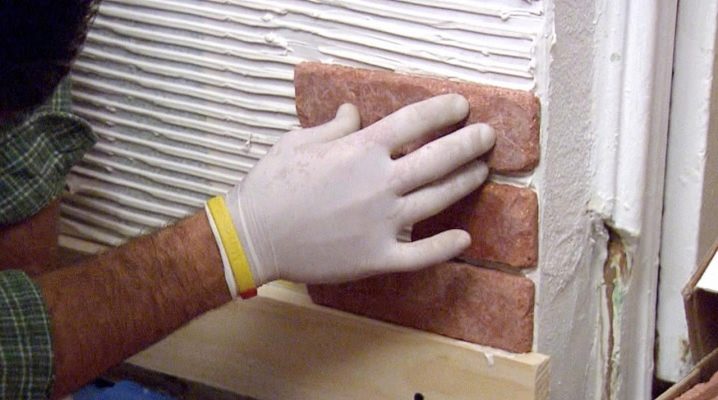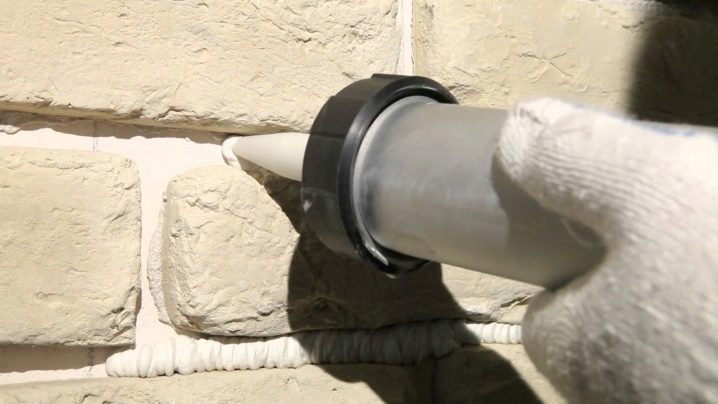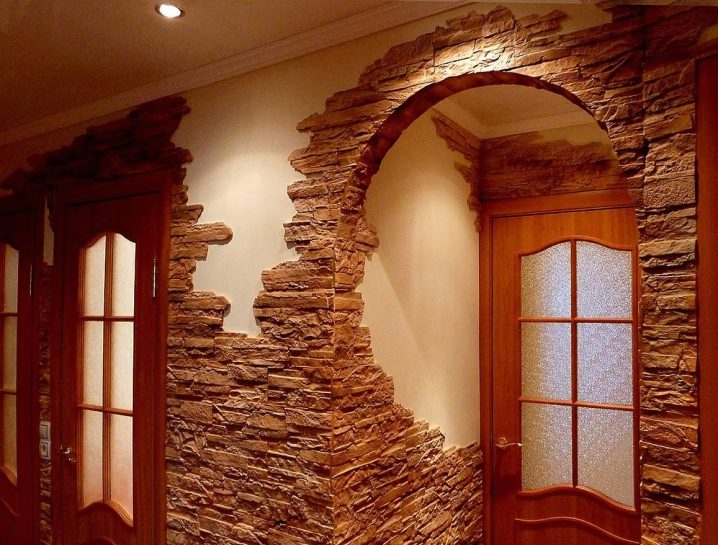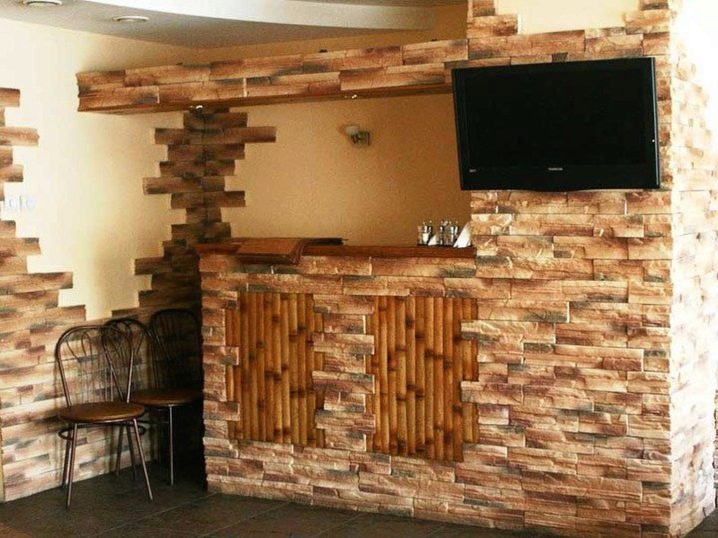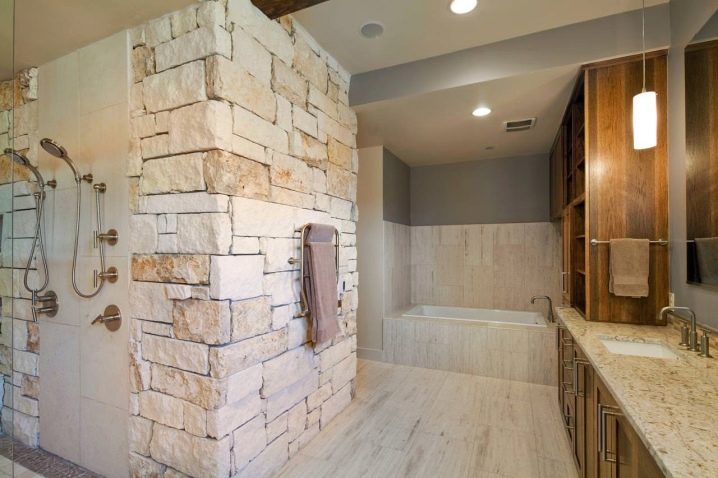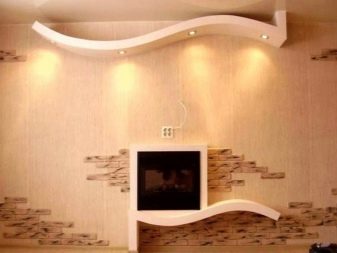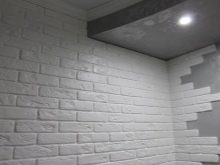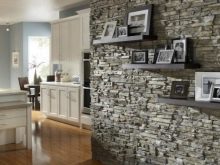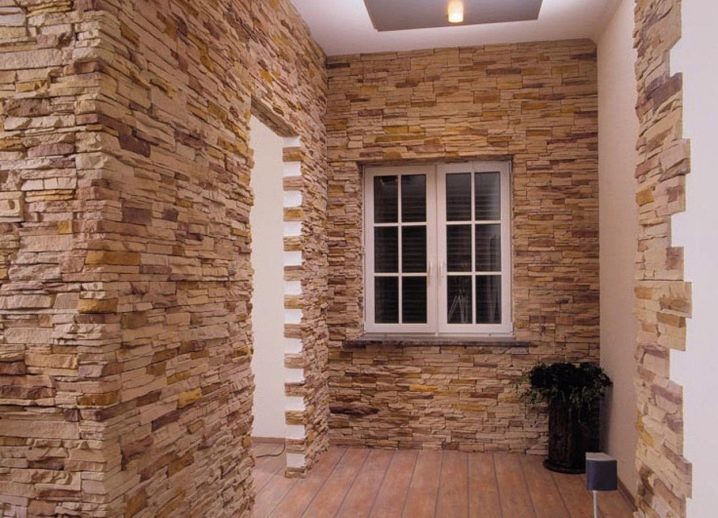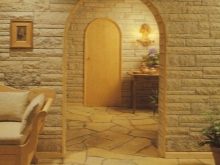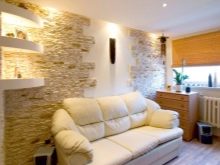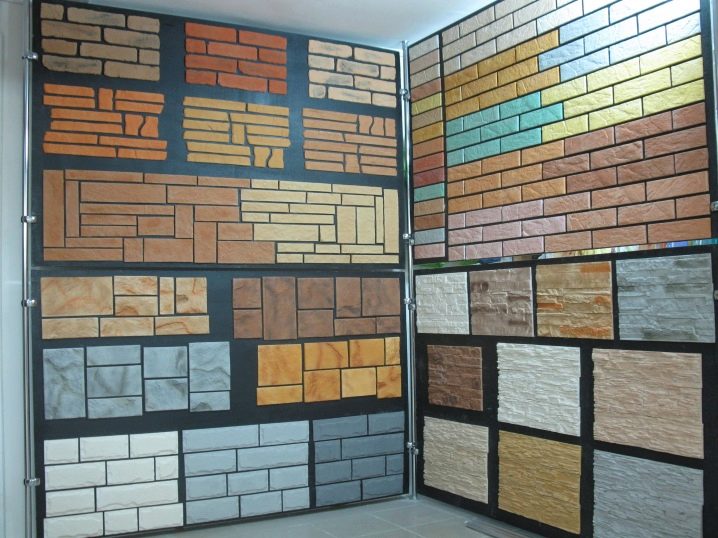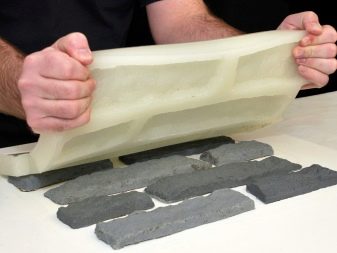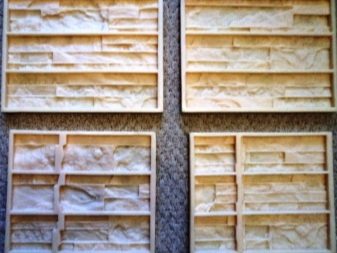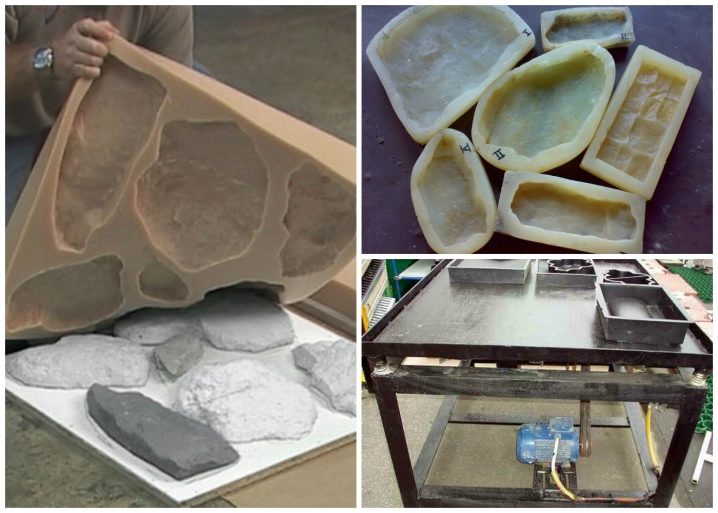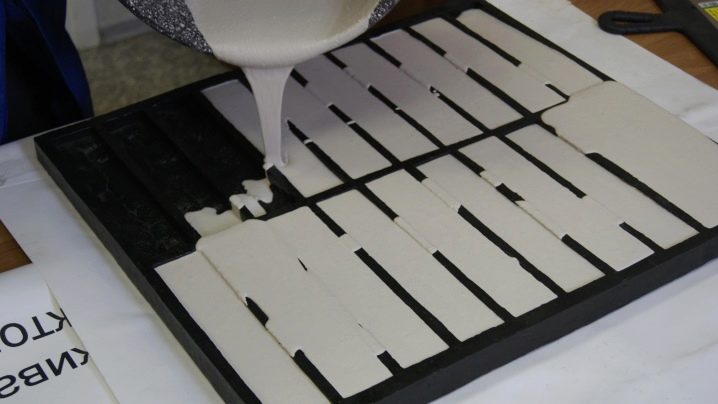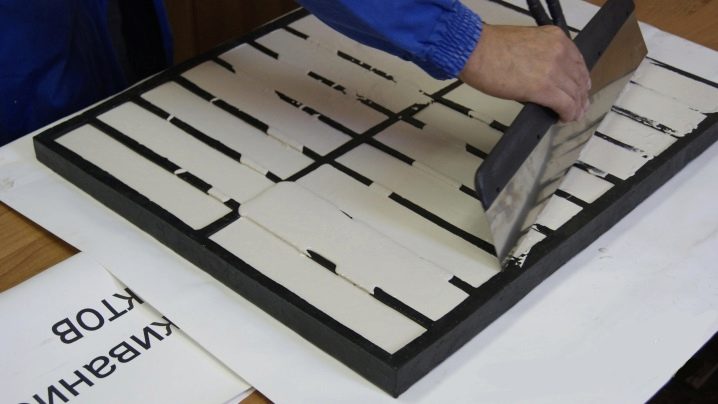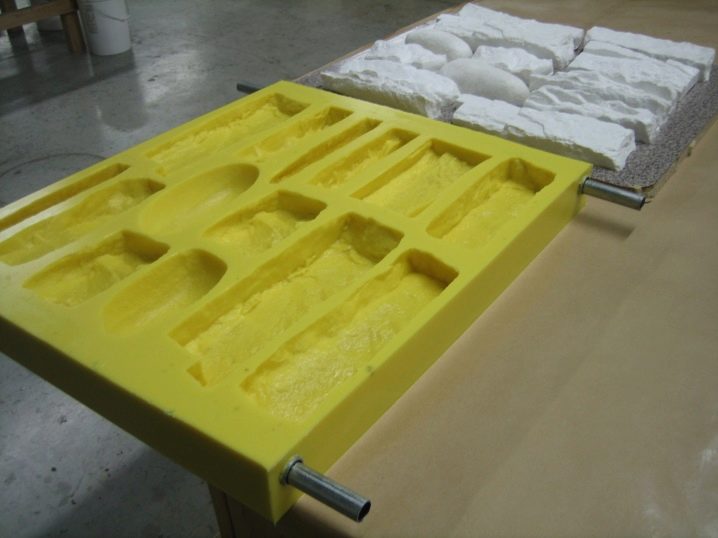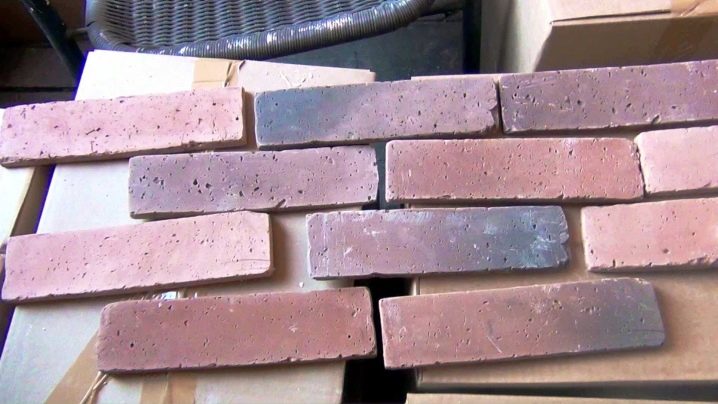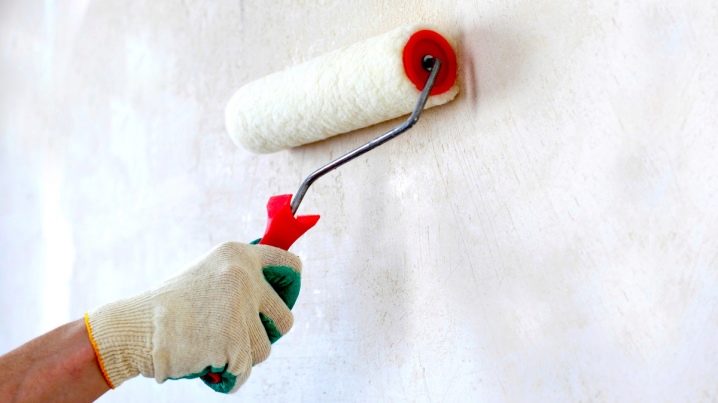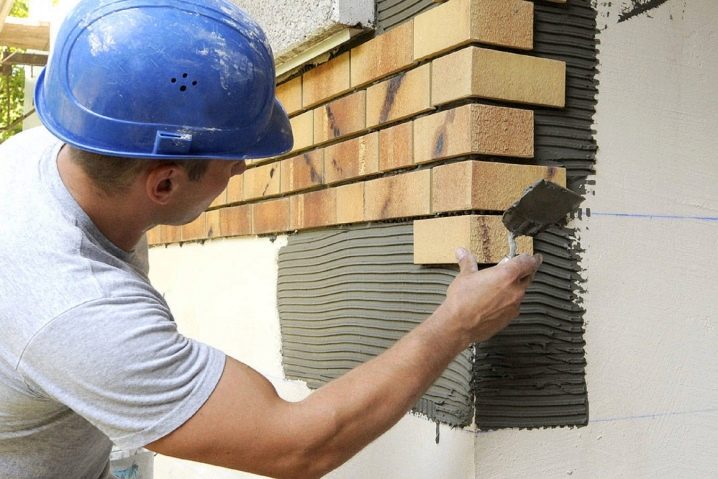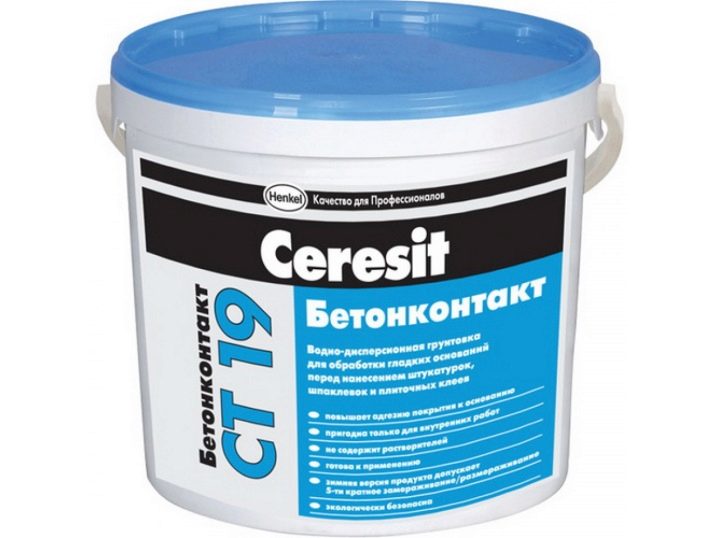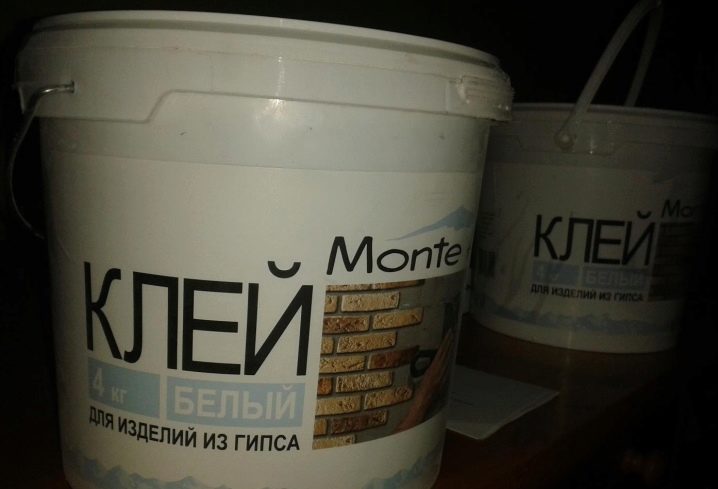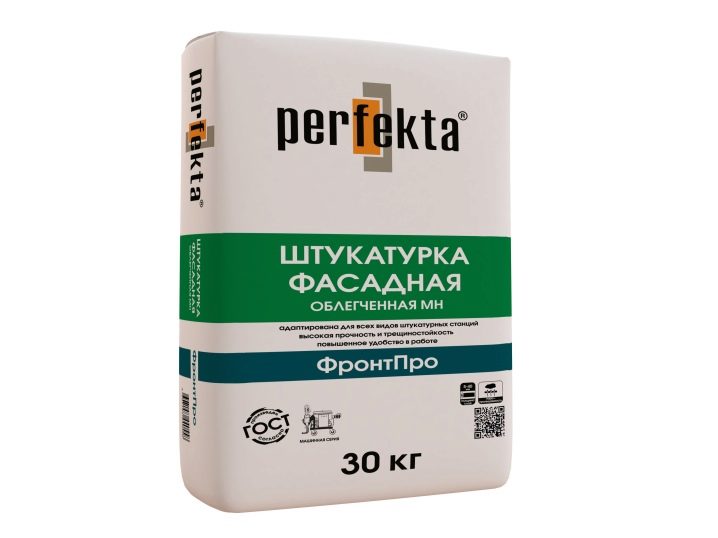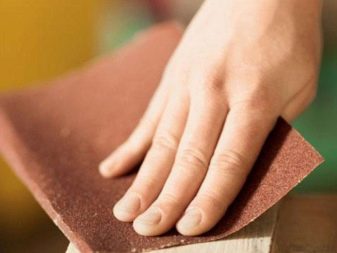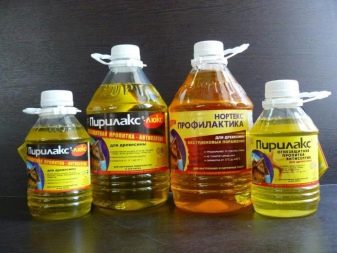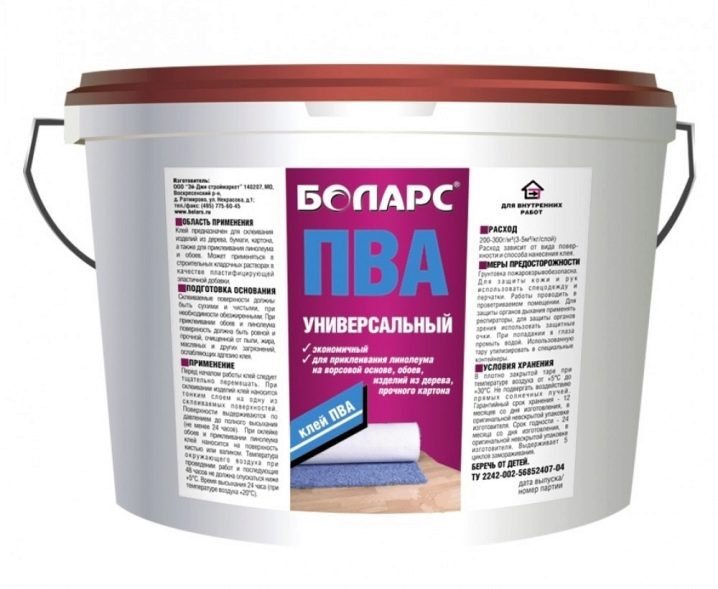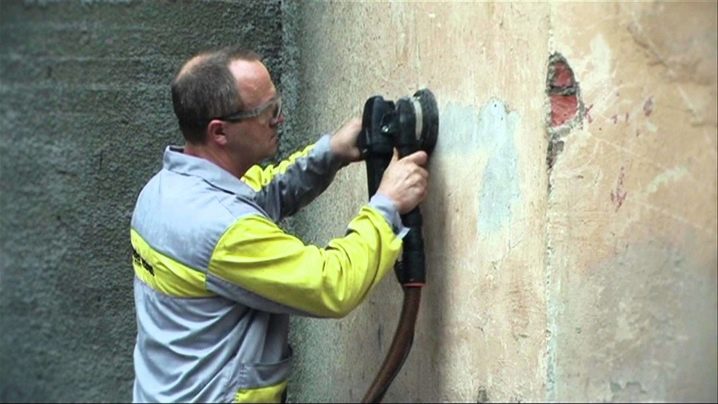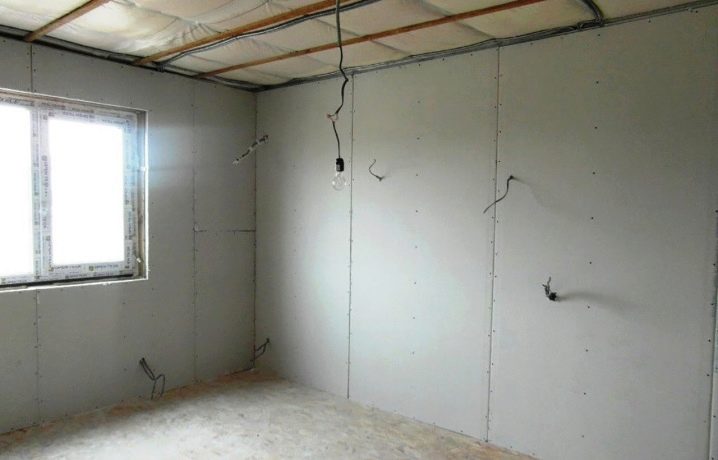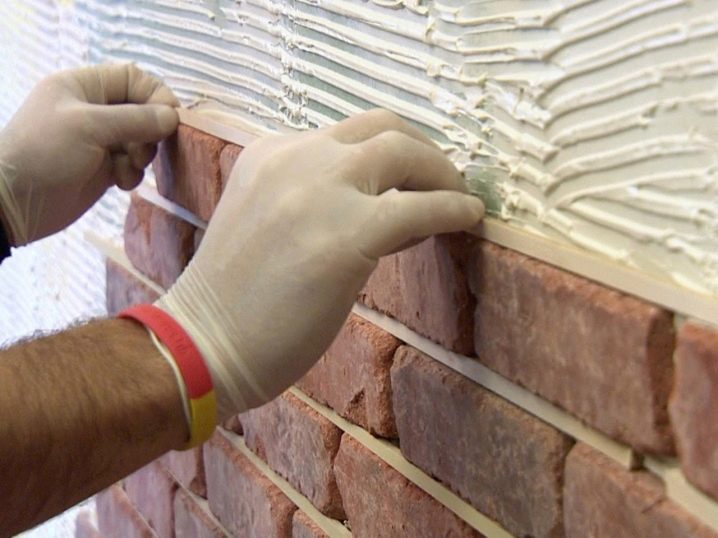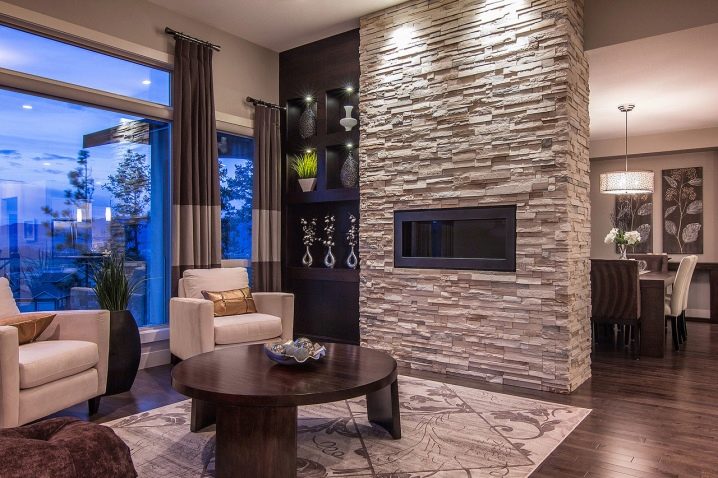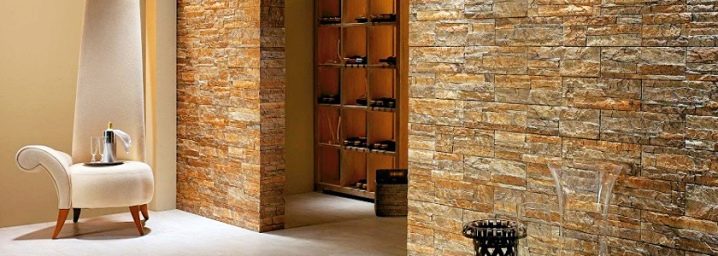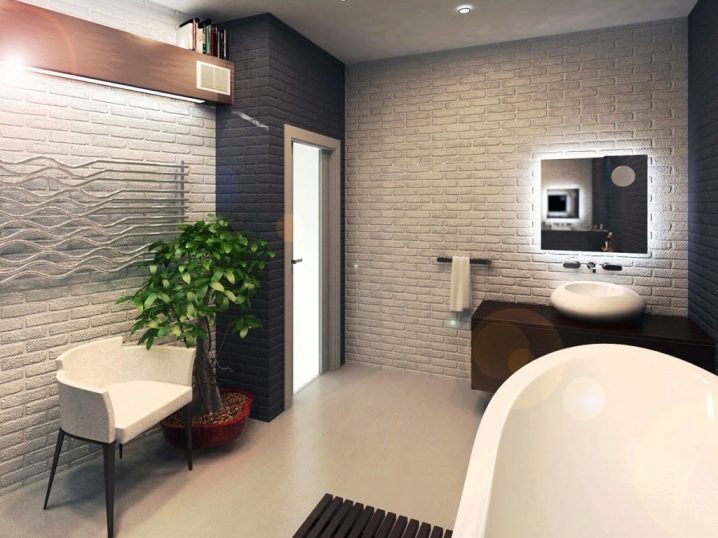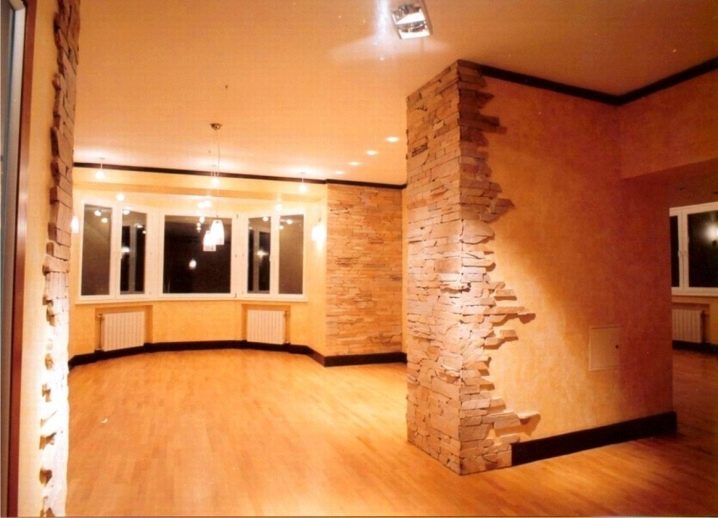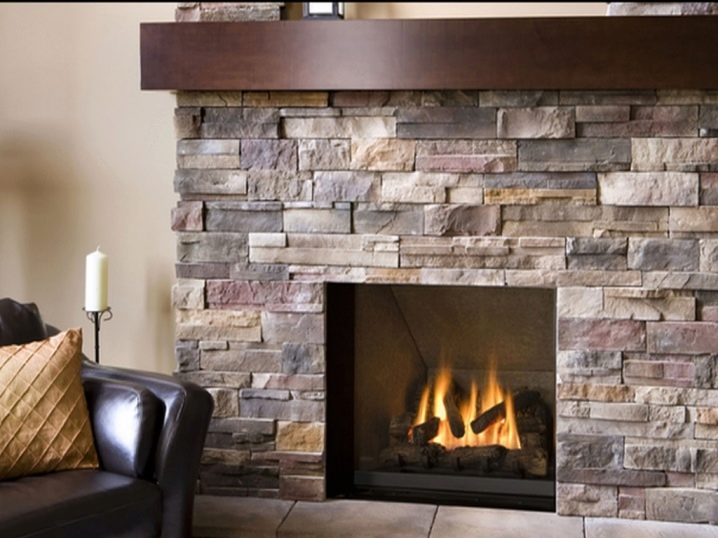Laying gypsum tiles do it yourself
The plaster tile is a material which is widespread and demanded presently. It is widely used for repairs. But what are the features of gypsum tile and how to lay it with your own hands?
Material Features
Gypsum tiles can be used to decorate rooms where there is a normal level of humidity. This material very quickly absorbs moisture, so it is not suitable for decoration of the kitchen or bathroom.
Stone wallpaper is a great opportunity to focus on specific areas of the room. Usually, gypsum material is produced in the form of a brick or a wild stone. You can choose the option that meets your wishes and needs.
Use of gypsum tiles is appropriate in the following cases:
- the material is suitable for small rooms, because it is very thin, so the valuable area will not be reduced;
- It is the best option to create a background that will highlight the beauty of the fireplace, paintings, furniture or TV;
- This is a suitable option for cladding the entire surface of the walls.
Thanks to the design in the form of imitation of a wild or torn stone, the interior becomes more dynamic and presentable.
This material looks great in the event that:
- the lined wall is an independent detail of the overall decor of the room;
- It is necessary to decorate the spacious square of rectangular shape.
Be sure to take into account the moment that concerns the choice of hue material. Light plaster tiles can visually enlarge the space. Dark material is appropriate only if you have a spacious room. The highlight will be a contrasting combination of different colors, because such decisions radically transform the interior for the better.
Advantages and disadvantages
This material has both advantages and weaknesses.
You should start with the benefits of gypsum tile:
- the low weight of the material makes it possible to veneer not too thick partitions and walls;
- tile made of plaster suitable for finishing almost any surface;
- it is very easy to process material in many ways;
- gypsum board withstands both too low and too high temperatures;
- as a part of the material there are no components that could harm human health;
- the cost of gypsum tile is very affordable;
- you can create similar material with your own hands.
Thanks to these strengths, tile is used for repairs in different rooms.
However, it also has certain disadvantages, which are also worth mentioning:
- it is necessary to work with material carefully, as it is too fragile;
- tile made of plaster is afraid of exposure to high levels of humidity;
- material will not be suitable for carrying out repair work outside the room.
Disadvantages of this material did not affect its prevalence and popularity. People are increasingly making a choice in his favor, because with his help, you can quickly and accurately carry out repair and construction work.
You can cope with the weaknesses of plaster tiles by treating them with special compounds. It is also necessary to carefully consider the process of its selection.Buy products of proven manufacturers who have proven themselves from the best side in the modern market. Such companies are ready to guarantee their customers the highest quality product, because they value their reputation.
How to make a tile with your own hands?
If you decide to create a stone with your own hands, you should choose the right matrix. There are forms of polyurethane and silicone. Silicone forms are considered more affordable, and the latter are a more versatile option.
The form for making tiles can be made by hand. It is possible to cope with similar work in 24 hours. The basis will be a sample of the stone, since the matrix must exactly fit its dimensions.
When the form is ready, it is poured with liquid polyurethane with a special hardener. Before pouring the mixture, clean the form. It is better to lubricate it in advance with means that contain fat, so that the solutions do not stick to its surface.
The next step is to pour the solution.
To create the optimum composition, mix the following ingredients:
- one part of slaked lime;
- six pieces of gypsum;
- water (1: 0.7);
- add color if necessary.
The components need to be mixed very quickly, as the plaster sets in instantaneously. Pour the liquid mass into the prepared mold and use a spatula to level its surface. The solution should be consumed immediately, as it is suitable for single use.
Dry plaster tiles also need to properly. Before pouring it is worth putting the molds on a flat surface. They are then left for about 20 minutes for the mixture to set. However, to completely dry the stone, you can not touch it for 24 hours.
To avoid the appearance of defects on the tile can be, if it is completely leveled. Thus, all air bubbles leave the structure of the solution. When the tile dries, it must be removed from the mold and dried further. But be extremely careful, because this fragile material is very easily damaged.
Thanks to these simple tips, you can create a tile with your own hands, without spending money on its acquisition. Dealing with work is not as difficult as it may seem. The main thing is to strictly follow these recommendations to get the highest quality material.
What to mount?
In order to attach this material to the selected surface, glue will do.
In the process of work, you should follow simple and useful tips:
- it is possible to glue tiles only on even and dry surfaces that are pre-treated with soil;
- the back side of gypsum plaster is subject to priming;
- it is necessary to wait until the base and tile are completely dry;
- cut decorative material is necessary with a hacksaw, adhering to an angle of 45 degrees. This is a fragile tile, which must be handled with extreme care;
- Gypsum tiles need to be glued using solutions whose consistency is not too thin;
- it is necessary to stack the material starting from the top corner, gradually moving downwards;
- make sure that the glue does not fall on the front surface of the material;
- laying "under the brick" is performed with a slight offset.
If you follow these simple tips, you can quickly and efficiently do all the work.
Suitable bases
It is possible to lay plaster plaster on the different bases. We will understand in more detail with the features of each option.
Unpolished brick
If we are talking about such a surface, it is necessary to prepare it in advance for further work. Those elements that loosely are removed from the masonry. It is also necessary to get rid of the excess amount of the solution. It is necessary to wash and dry the surface, and also to treat it with an antiseptic and a fixer.
Gypsum tiles can be attached to this surface with:
- A special adhesive composition on a polymer plaster base is a tool that will reliably fix the material on the surface without plaster. But it is worth adding a little 10% PVA to the glue to make the water absorption properties better;
- adhesive mastic - a solution that is very difficult to apply a thin layer;
- cement mortar - they are very easy to prepare, and they dry long enough.
Plastered surfaces
Attach the material on the plaster is also possible. But this does not work cement mortar. The solutions are peeling, so their adhesion will be very weak. It is better to use a special tile adhesive, which will allow to cope with the repair without any problems.
Plaster securely holds plaster tiles.That is why the design will serve you as long as possible, without being deformed and without losing its original appearance.
Wood
To attach a gypsum tile to wood, you must:
- remove the old coating, peeling material to clean fibers. It is also worth treating the surface with an antiseptic;
- New lumber is covered with products that eliminate the risk of fire.
It is better to use PVA glue to securely attach the material to wooden substrates.
Plasterboard surfaces
Drywall requires the use of quick-drying compounds. To process the surface with putty will not have to, so you can get rid of unnecessary problems.
It is better to use PVA glue, which has the following advantages:
- the composition dries very quickly;
- PVA is not subject to shrinkage;
- it is rather plastic glue structure;
- it can be applied with a thin layer;
- excess can be removed with a regular rag;
- The cost of the compositions available.
You can choose the best option, focusing on the above features. Only in this case, you expect an effective result of the work.
How to put?
To properly put the tile on the wall or another surface itself, it is necessary to strictly follow a certain technology of performance of work:
- prepare the base - any clinker tile requires a perfectly smooth base for facing surfaces, so be sure to align the walls or ceilings. Eliminate the bumps and swellings that are present on the surface using special tools;
- Treat the surface with a primer - if the base under the brick is not too even, you can sheathe it with drywall;
- apply glue to the base - attach the material to the stone, for example, to finish the fireplace, you can use tile adhesive;
- the final preparation of the base - this stage implies the leveling of the adhesive composition with a notched trowel. Then you need to lay out a tile of plaster, following the pre-applied markup. Be sure to use the level of the laser or mechanical type.
Decorative plaster tiles are laid in rows in a horizontal direction. It is worth starting from the bottom corners, gradually rising upwards. Press the material against the base very carefully.Remember that it is quite fragile, so it is easy to break. Excess adhesive composition that appears between the seams, remove with a spatula, made of rubber.
What to process after installation?
Proper processing of gypsum tiles after installation will extend its life. For this, it is appropriate not only to prime the surface, but also to treat it with special varnishes.
This processing method has its weighty advantages:
- varnish protects the material from exposure to high levels of humidity;
- mold and fungus will not be scary for the gypsum tile;
- it will serve you as long as possible, maintaining its original appearance;
- You can create a smooth surface that attracts attention with its brilliance.
These are the main points that concern the processing of gypsum tiles after installation. If you choose the right material, you can achieve an incredibly effective repair result.
Beautiful interior solutions
The interior is radically transformed for the better, if you use gypsum tiles for its design. You can connect imagination and creativity to create your dream room.
This is a good example of the use of gypsum tiles under the brick. The material has a small thickness, so with its help you can save valuable space in a small room. It will be a great background for paintings. They make out the bars and decorate the openings in the walls.
Gypsum brick tiles can be decorated in different shades. Its surface looks presentable, which instantly draws attention to the walls. Laying the material will not cause you special problems and difficulties.
You can make a choice in favor of plaster tiles under the stone. This is an excellent solution for the design of the bar or arch. The material is suitable for decorating a separate section of the wall, because it is a certain accent inside the room.
However, some designers claim that you can decorate a whole wall with gypsum tiles under the stone. In this case, you can create a beautiful background for the interior, which will instantly attract attention.
Due to the high refractoriness of the material, it can be used to design fireplaces. This is a good background for the flame, which creates a cozy and comfortable atmosphere in the house.In addition, you can touch the tile, which will not heat up in the process of burning the flame.
These are the main features of gypsum tiles. If you choose this material, you can create the interior of your dreams. The main thing that the tile was strong, durable and reliable.
How to lay a plaster tile, see the following video.
